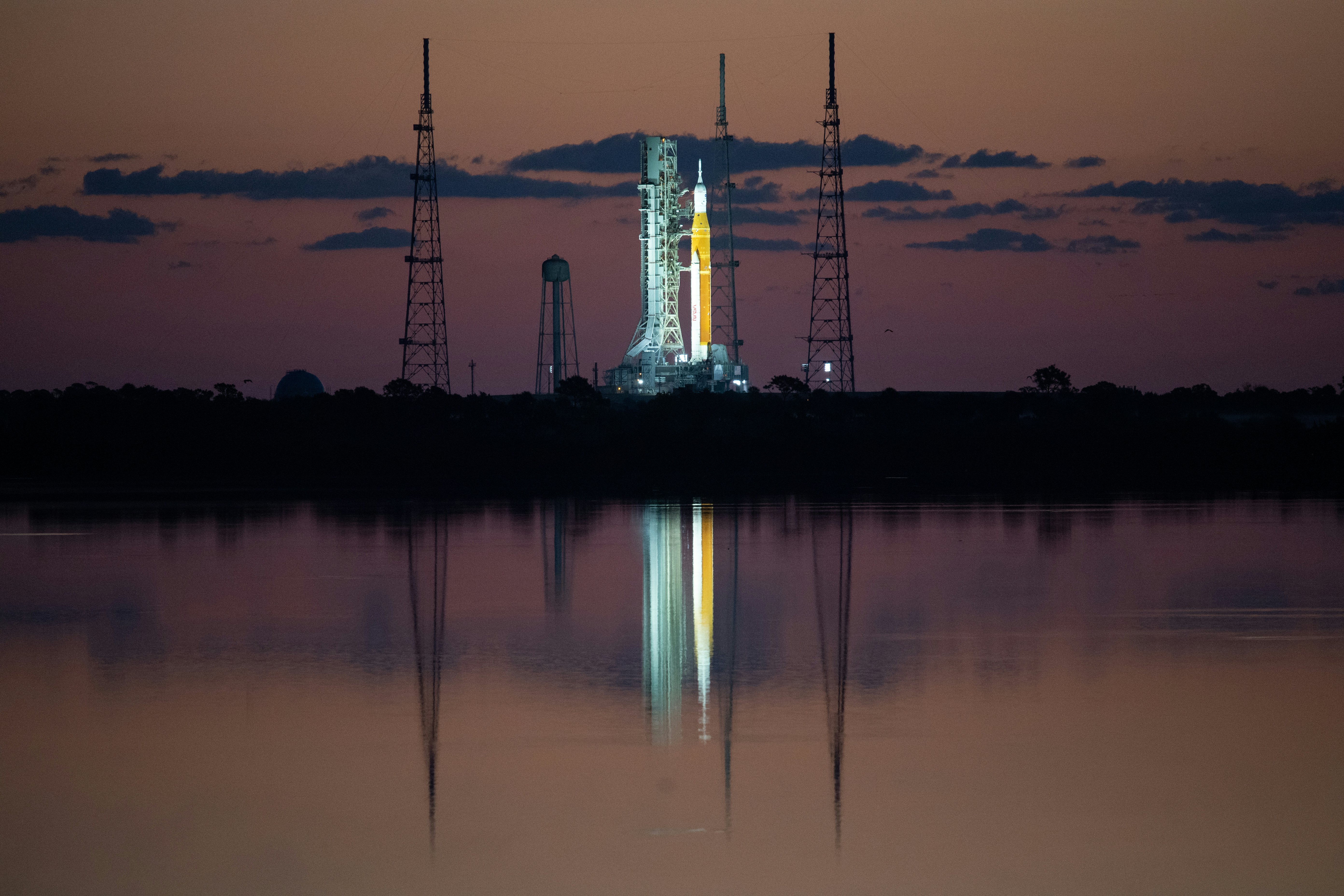
I’m taking bets: When do you think the first Artemis mission — Artemis I — will launch? I’m starting to suspect the launch date may be pushed into 2023. My suspicions are founded on the news that NASA has delayed take-off until at least August of 2022 for its mega-sized Moon rocket. Then again, maybe I’ll be proven wrong and to rub salt in my wound NASA will schedule the launch for my birthday.
This is an adapted version of the Inverse Daily newsletter for Monday, May 9, 2022. Subscribe for free and learn something new every day.
It’s a new week. Breathe! You got this! Now, read some fascinating science stories on NASA’s Moon woes, hidden delights under the Antarctica ice sheet, and female reproductive healthcare. Thanks for joining us.

NASA wet dress rehearsal woes set back launch date of Moon mega-rocket
After a third attempt at a wet dress rehearsal failed, NASA sent Artemis 1 back to the VAB — and set back the anticipated launch date by three months. The space agency is now hoping to fly its Artemis-1 mission — an uncrewed Orion capsule and a powerful Space Launch System rocket — beyond the Moon and back in early August 2022, much later than the April or May launch dates it was considering back in February.
“As we’ve been saying, we’ll set that official launch date after we get through wet dress,” Jim Free, associate administrator of the Exploration Systems Development Mission Directorate at NASA Headquarters, said during a Thursday media conference call.
The wet dress rehearsal is the final major ground test of the Space Launch System (SLS) rocket, the workhorse of NASA’s Artemis program. NASA personnel detected errors the last three times that this multi-day test was performed in April at a launchpad at NASA’s Kennedy Space Center (KSC) in Cape Canaveral, Florida. Some issues were reparable at the launchpad. But the ones most recently spotted could only be fixed by wheeling the rocket back to the complex’s titanic Vehicle Assembly Building (VAB).

The best sci-fi thriller on Netflix reveals a provocative spin on time travel
What if you were tasked with killing your future self? Could you do it?
It’s a mind-blowing question that forms the backbone of the sci-fi thriller Looper, which follows a time-traveling hitman (Joseph Gordon-Levitt) who is assigned to murder his future self (Bruce Willis). Nearly ten years after its release, Looper raises fundamental questions about the paradoxes of time travel.
“Time travel is still an ongoing field of research where the physics community does not know the full story yet,” says David Arvidsson-Shukur, a Sarah Woodhead Fellow of Quantum Mechanics at the University of Cambridge’s Girton College.
In this special edition of Reel Science, Inverse looks back at Rian Johnson’s action-packed movie by asking how well Looper’s hijinks stack up against real-life physics and other time-travel films, including how it addresses important ideas about the nature of free will.
In short: Looper may not always be scientifically accurate, but it certainly keeps you on the edge of your seat.

Look: A vast reservoir of water has been hiding under Antarctic ice
Beneath Antarctica’s glaciers, there are numerous lakes and rivers of liquid water that flow freely. Researchers know these subglacial bodies of water exist — but their full extent has been elusive.
Writing in the journal Science on Friday, researchers describe a reservoir and system of waterways beneath the icy continent that is far more vast and deep than expected.
Previous studies have mapped underground lakes and rivers using imagery taken from helicopters and satellites. But it's hard to penetrate the ice to get a full picture. For the Science paper, researchers used a technique that measures how much electromagnetic energy is conducted by different structures and living things below the surface of the ice.
They spent six weeks planting instruments in roughly four dozen locations across the Whillans Ice Stream to measure the water flows beneath it.

This futuristic telescope would use Einsteinian physics to find Earth 2.0
The Sun could act as a big magnifier for finding out if a rocky planet has the right ingredients for life. The so-called “gravity telescope” would use the Sun to examine very distant worlds, perhaps as soon as a few decades from now if the funding, technology, and will come together in the right way, new research shows.
Co-author and exoplanet researcher Bruce Macintosh of Stanford University tells Inverse his team’s paper, published May 2 in The Astrophysical Journal, builds upon decades of research by engineers and scientists seeking to understand more about the 5,000 known planets outside of our solar system.
The concept of using the Sun as a telescope is also decades old, but papers like this newly published work can suss out more details on the initiative, he says.
The gravity telescope uses a long-established astronomical technique called gravitational lensing. The effect happens when a massive object in the foreground of view (like a galaxy) bends the light of a distant object in the background (like a planet). Einstein correctly predicted this effect at least as far back as 1936.

What overturning Roe v. Wade means for medication-based abortion
The U.S. Supreme Court is poised to overturn its seminal 1973 decision Roe v. Wade — stripping Americans of a federally protected right to abortion. A draft of the opinion, leaked to Politico on Monday, would allow states to determine whether or not they want abortion to be legal, and to what extent.
While the states would be able to shut down clinics and medical professionals providing surgical abortion, the implications for medication abortion are far less clear.
In 2000, the FDA approved the use of mifepristone, also known as RU486 — in combination with misoprostol (a drug used for ulcers and to induce labor) to end a pregnancy. Today, it’s approved for use for up to 10 weeks into a pregnancy or 70 days after the last day of menstruation, though some doctors prescribe it “off label” beyond that. In 2020, the Guttmacher Institute, a nonprofit researching reproductive health found that over half of abortions in the United States are now medication abortions.
Key Quote: “The fact that there’s an FDA-approved drug for use up to 10 weeks and states are saying ‘no, you can only use it for six,’ makes no sense.” Kirsten Moore, director of the EMAA Project, a nonprofit dedicated to expanding abortion access.

About this newsletter: Do you think it can be improved? Have a story idea? Want to share a story about the time you met an astronaut? Send those thoughts and more to newsletter@inverse.com.
- On this day in history: On May 9, 1960, the U.S. FDA approved the use of Enovid as a form of birth control — the first oral contraceptive pill to get an official seal of approval.
- Song of the day: “Stuck On You,” by Elvis Presley.







